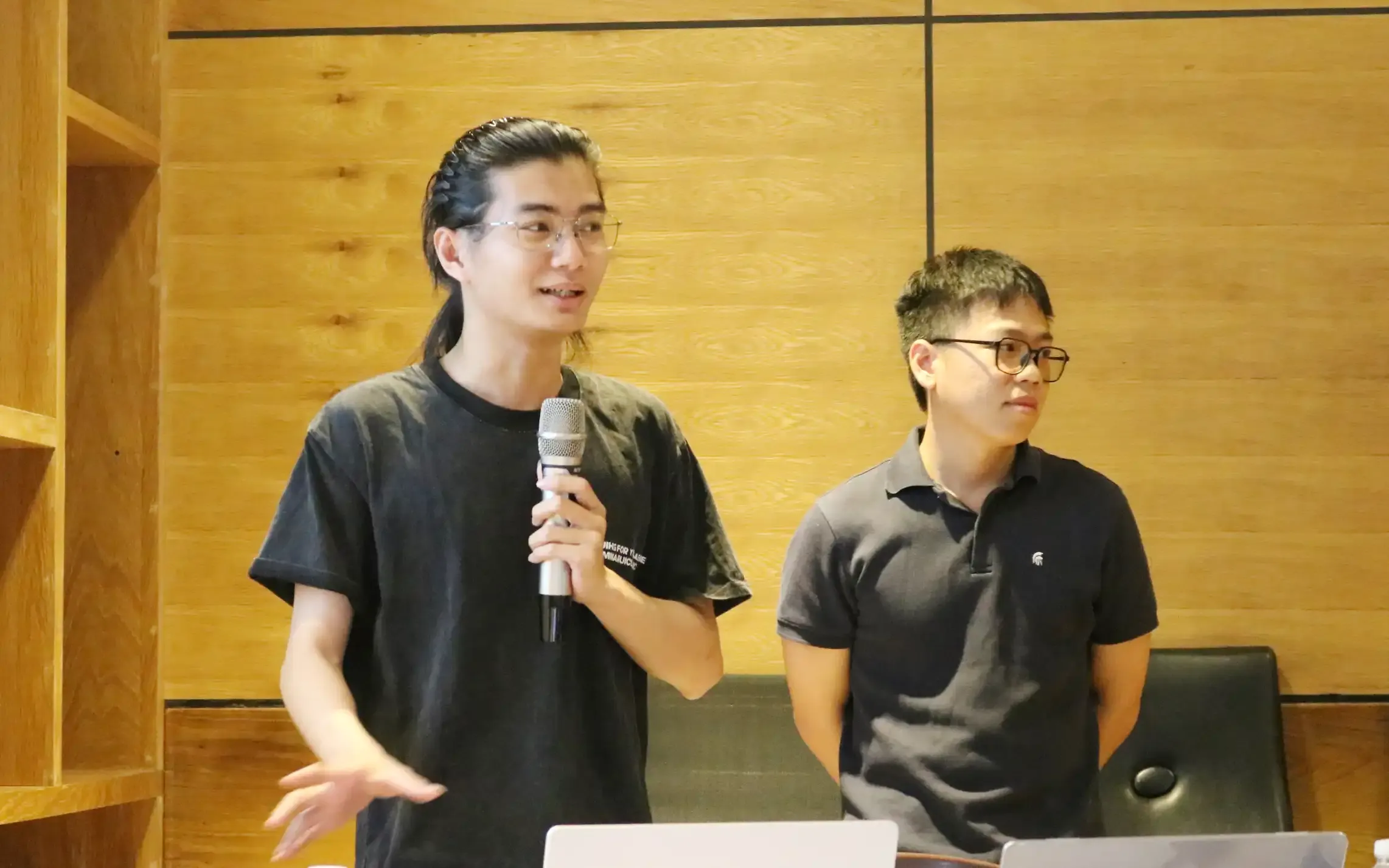Build Website With Builder.io, NextJs And AI

News
On Friday, 9 May 2025, S3Corp. hosted an internal sharing session titled “Build Website With Builder.io, NextJs And AI.” The purpose was to explore practical integration between visual development tools and modern frameworks, alongside emerging AI technologies. This session encouraged discussion and practical understanding among developers, designers, and technical leads within the company. The sharing also reflected the value of continuous learning that S3Corp. encourages within its teams, offering an opportunity to upskill and adapt to modern development practices.
09 May 2025
On Friday, 9 May 2025, S3Corp. hosted an internal sharing session titled “Build Website With Builder.io, NextJs And AI.” The purpose was to explore practical integration between visual development tools and modern frameworks, alongside emerging AI technologies. This session encouraged discussion and practical understanding among developers, designers, and technical leads within the company. The sharing also reflected the value of continuous learning that S3Corp. encourages within its teams, offering an opportunity to upskill and adapt to modern development practices.

The session began by introducing Builder.io, a visual development platform that simplifies the website building process. Builder.io enables drag-and-drop content editing, allowing developers and designers to collaborate more efficiently. Combined with NextJs, a React-based framework known for its server-side rendering and performance optimization, the two tools create a strong development pipeline.
The integration between Builder.io and NextJs was demonstrated with real-time editing and deployment. Builder.io provides an interface for content creators while keeping the flexibility and power of a code-based frontend handled by NextJs. This separation allows teams to work independently while maintaining site performance and scalability.
During the demonstration, participants saw how content changes on Builder.io instantly reflected on the NextJs application. This live editing capability reduces development time and minimizes miscommunication between roles. The integration also supported routing, dynamic content, and API interactions, proving useful for projects that require frequent updates and component reuse.
The session continued with the introduction of an AI tool embedded within the Builder.io ecosystem. This AI feature assists in generating layout suggestions, text content, and code snippets directly within the editor. It supports prompt-based commands to generate page sections, optimize content structure, or even create UI components.
 A live walkthrough showed how the AI
tool suggested a homepage layout after receiving a simple text prompt. This
saved time in prototyping and provided a starting point for more refined work.
It also offered code output options that were compatible with React components,
which developers could copy and customize within their NextJs project.
A live walkthrough showed how the AI
tool suggested a homepage layout after receiving a simple text prompt. This
saved time in prototyping and provided a starting point for more refined work.
It also offered code output options that were compatible with React components,
which developers could copy and customize within their NextJs project.
The AI tool was not positioned as a full replacement for developers or designers. Instead, it acted as a support mechanism to boost productivity and idea generation, especially useful during the initial design phase or when repetitive elements are needed quickly.
One clear advantage of using the AI tool is speed. It significantly reduces the time needed to create standard page sections or repeatable layouts. During the session, participants observed how the tool generated a blog list layout, including HTML structure and styling, in under a minute.
Another benefit is assistance for less experienced developers or content creators. The AI can provide a learning bridge by generating examples that align with industry standards. These examples can be used to understand how layout logic or component design works within a frontend project.
The AI tool also contributed to better team collaboration. It provided a shared starting point for content and design, reducing back-and-forth communication and the need to start from scratch. This aligns well with agile development processes where quick iterations are key.
Participants also noted the tool’s integration with Builder.io as seamless. It did not interrupt the existing workflow but instead enhanced it, offering contextual support while editing or designing in real time.
Despite its strengths, the AI tool comes with limitations. It does not always produce production-ready code. Developers must still review and modify the output to ensure consistency with project standards. During the session, a generated layout had to be manually adjusted to match specific design tokens used within the NextJs project.
There were also concerns regarding creativity and brand alignment. The AI’s suggestions are based on general patterns and may not fully reflect a specific design language or tone. It can provide a foundation, but final designs and content still require human refinement to match project goals.
Another limitation discussed was dependency. Overreliance on the AI tool could lead to reduced critical thinking or learning opportunities for junior developers. Participants agreed that while the tool speeds up delivery, it should be used to support—not replace—the development process.
The group also mentioned that the AI tool performs best with clear, structured prompts. Vague input leads to generic or irrelevant output. Therefore, effective use of the tool requires understanding of both content and development structure.
To demonstrate practical use, a sample web page was built during the session using Builder.io connected with a NextJs project. The team defined page sections, used the AI tool to scaffold layout and content, and finalized the structure with manual coding.

The final output was a functional marketing page, developed in less than an hour, showing the speed and flexibility of combining these tools. It maintained clear code separation, ensured SEO compatibility, and supported content editing through Builder.io.
This practical session helped reinforce how Builder.io’s visual interface can handle marketing content updates without developer involvement, while developers can focus on dynamic elements and performance optimization within the NextJs environment.
This sharing session reflects the culture at S3Corp., where continuous learning and knowledge sharing are actively supported. Sessions like this offer real-time insights into modern technologies and help bridge gaps between roles within teams.
By providing space for learning and experimenting with new tools, S3Corp. empowers teams to stay updated with industry trends and improve collaboration efficiency. This culture supports both personal growth and project success, aligning technical skills with business needs.
Whether you have any questions, or wish to get a quote for your project, or require further information about what we can offer you, please do not hesitate to contact us.
Contact us Need a reliable software development partner?
S3Corp. offers comprehensive software development outsourcing services ranging from software development to software verification and maintenance for a wide variety of industries and technologies
Software Development Center
Headquater 307
307/12 Nguyen Van Troi, Tan Son Hoa Ward, Ho Chi Minh City, Vietnam
Office 146
3rd floor, SFC Building, 146E Nguyen Dinh Chinh, Phu Nhuan Ward, HCMC
Tien Giang (Branch)
1st floor, Zone C, Mekong Innovation Technology Park - Tan My Chanh Commune, My Phong Ward, Dong Thap Province
_1746790910898.webp?w=384&q=75)
_1746790956049.webp?w=384&q=75)
_1746790970871.webp?w=384&q=75)
